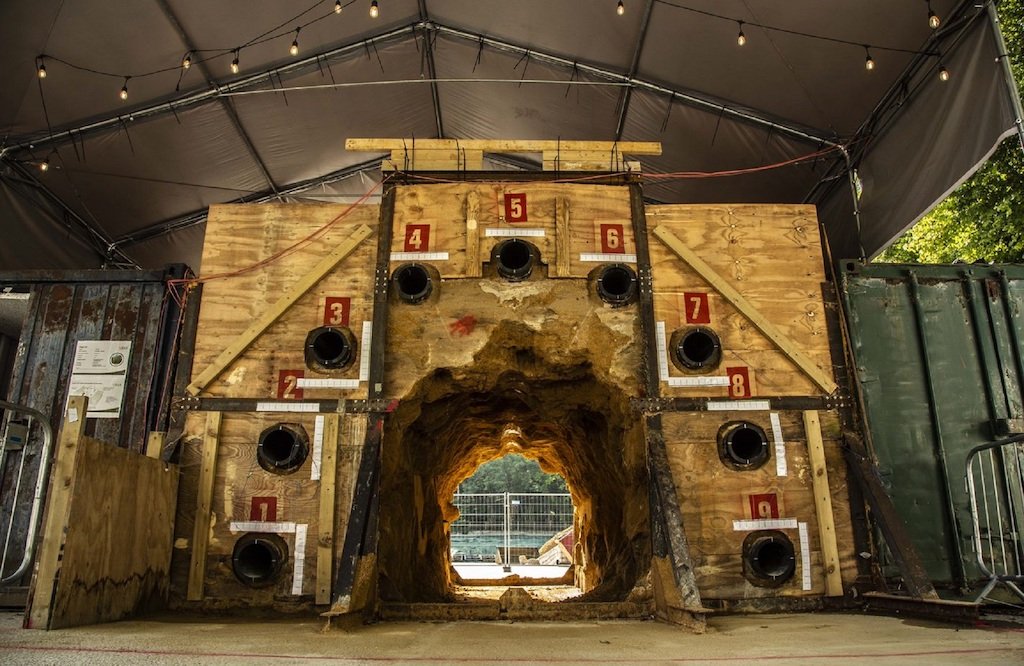Swarm construction robots 3D-print tunnel in Network Rail backed project
Basingstoke based technology start-up Hypertunnel has demonstrated the process of 3D printing a tunnel using swarm construction robots. Constructed as part of a project for Network Rail, the approach is aiming to build tunnels 10 times faster and at half the cost of conventional methods.
Hyprtunnel built he Peak XV 6m long, 2m high and 2m wide “pedestrian-scale” tunnel at its R&D facility in the North Hampshire Downs.
Using swarm construction methods enabled by a digital twin, a fleet of “Hyperbot” robots enter the ground via an arch of high-density polyethylene pipes. Once inside, the robots 3D-print the tunnel shell by injecting material directly into the ground.
The Network Rail project behind the Peak XV tunnel has been investigating technologies that are key to low-disruption tunnel repairs for the UK’s regional railway infrastructure, which includes approximately 650 Victorian age tunnels.
Network Rail’s professional head for mining and tunnels David Castlo said, “Our large portfolio of Victorian tunnels requires increasing levels of work to meet the needs of the railway network. However, we want to reduce the level of disruption to our passengers so we are constantly searching for new approaches to enlarging or repairing tunnels that reduce the length of time a tunnel will be closed to trains. Peak XV moves us a step closer to that goal and, crucially, with a method that reduces workforce safety risk.”
Hypertunnel co-founder and co-CEO Steve Jordan added, “To unveil our first large scale demonstration tunnel is a big step, not only for Hypertunnel, but for the tunnelling and construction industries which are eagerly anticipating the readiness of our approach to use, as appropriate, in their global projects.
“While using robots exclusively to build underground structures is dramatically different, the contributing technologies, such as digital twins, robotics, 3D printing and digital underground surveying, supported by artificial intelligence and virtual reality, are all well proven in other industries. In fact, the Hypertunnel insitu method is all about de-risking construction projects.”
Earlier this year, Hypertunnel received £1.6M funding from the European Innovation Council Accelerator scheme, as well as financial investment from construction group Vinci.

